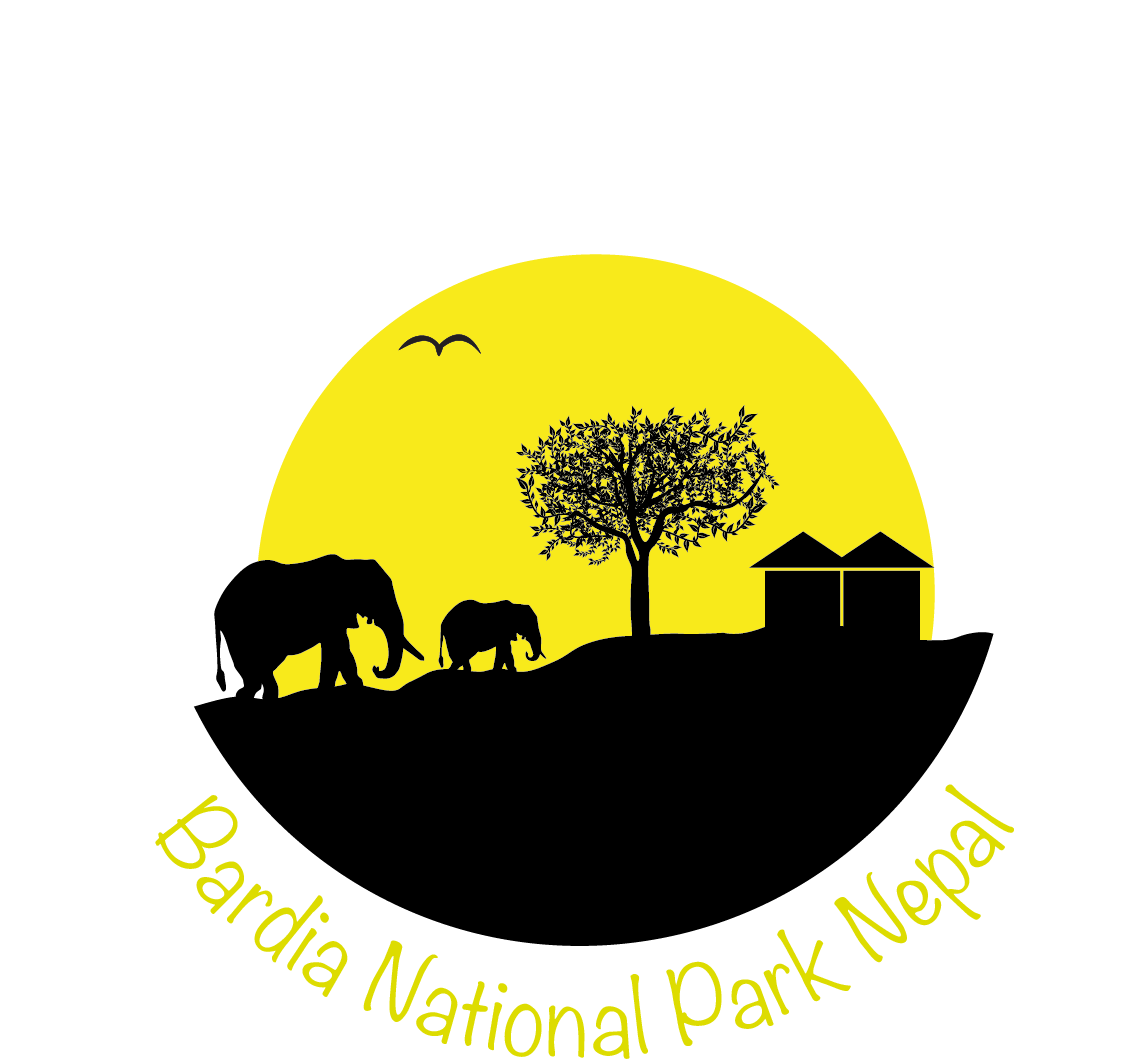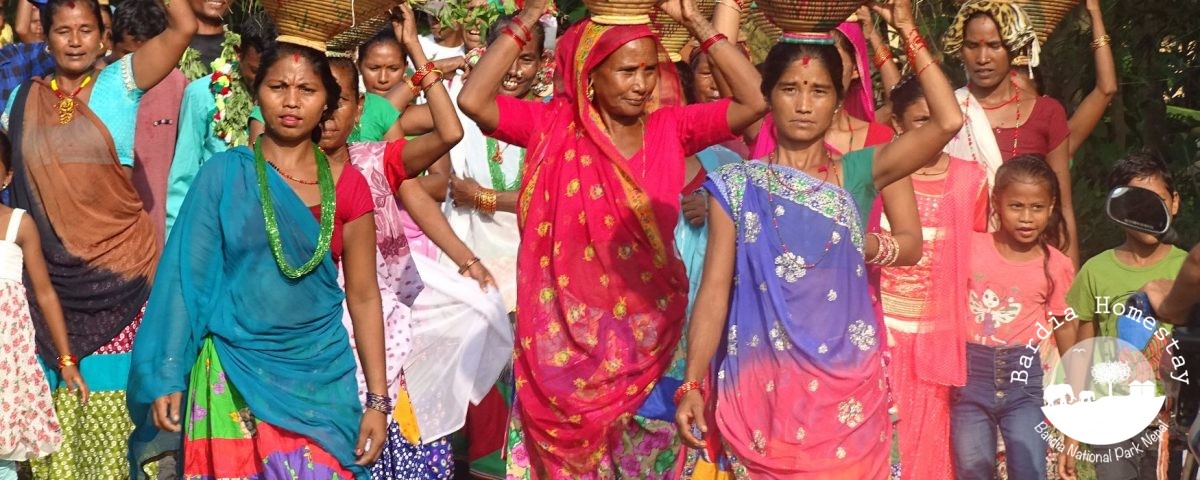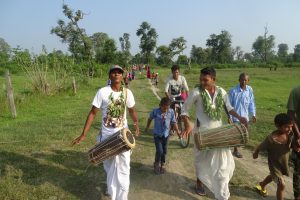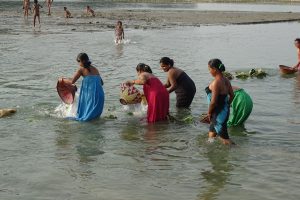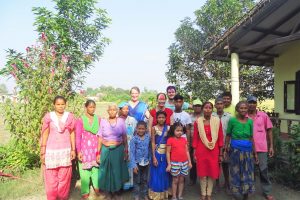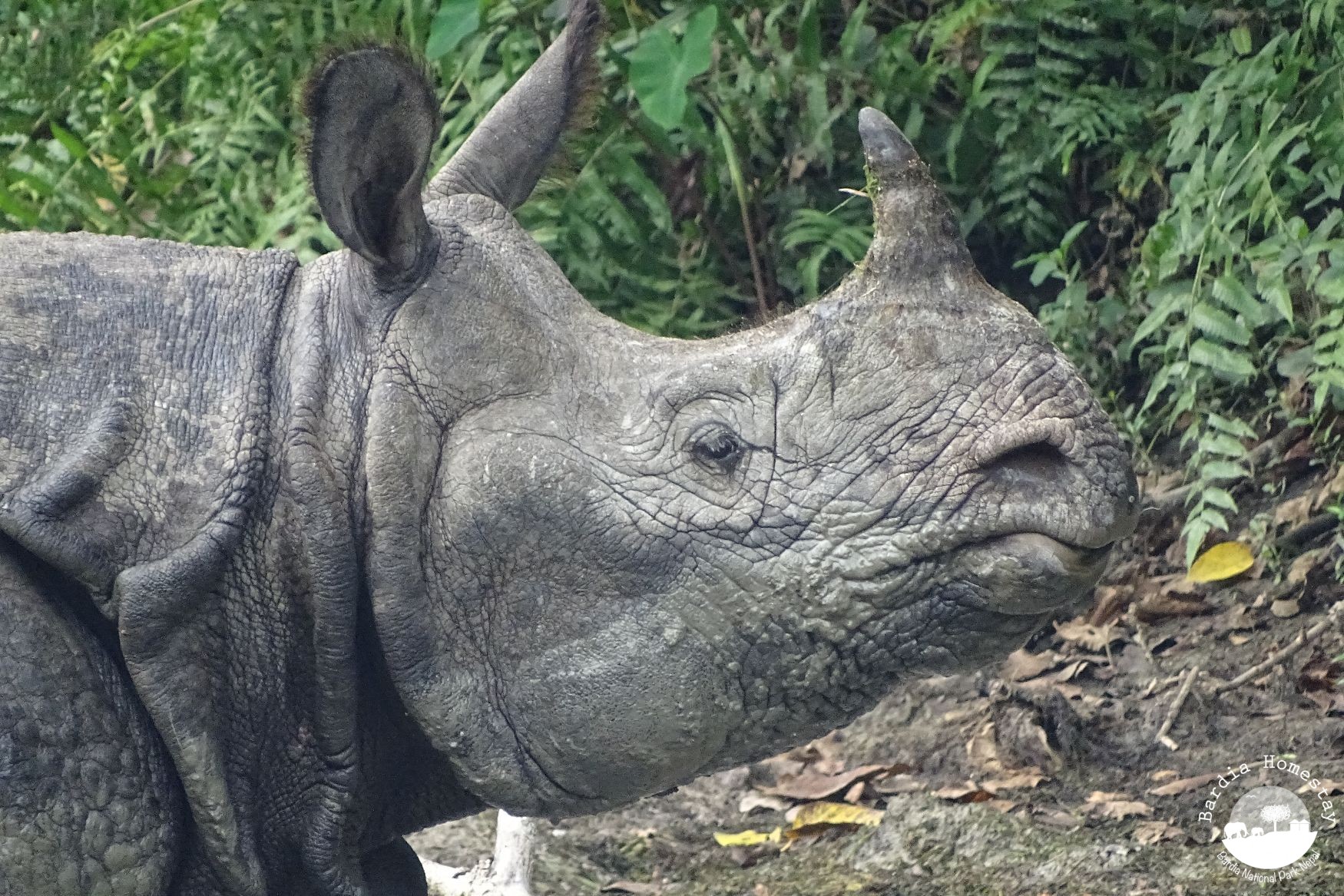
Rhino spotting in Dalla – Bardia National Park
augustus 14, 2016
Meeting the Tharu Guruwa; a spiritual healer
januari 18, 2017‘In a procession with drumplayers on the front, the Tharu villagers walk together to the river’
The yearly biggest and longest festival of Nepal called ‘Dashain’ is over. The festival started the 1st of October 2016 and lasted for fifteen days. For the people in Bardia the most important days are the 10th and the 11th day of the festival. Dashain is the celebration of victory of good over evil and is symbolized by goddess Durga. It is the most important festival for the Nepali people and they celebrate it in different ways.
When I walk through the village around the 6th of October, I see a lot of male villagers, who normally work in India and Kathmandu, who returned to their homes for a two weeks holiday. After greeting their wives and children (they maybe didn’t see eachother for a year), the men go to the local pub to meet old friends and play cards. In meanwhile the women are busy to clean their houses, which are constructed from reed and bamboo covered with a layer of mud and dung. The cleaning means removing all the spiderwebs from the ceiling and put a new layer of mud and dung on the walls.
During the Dashain festival everybody likes to wear new clothes. The tailors in our village are working 24 hours a day to make new blouses, dresses and pants. The new blouse I ordered to wear under my sari (Nepali dress) is much too tight when I pick up it up. No problem. Again the woman puts it under her sewing machine and 10 minutes later it is ready.
For the Tharu people the 10th of October is the most important day of the festival. In the morning we are invited at our neighbours house to eat local farm chicken and digri (steamed bread made from riceflower) and to drink the local brewed ricebeer. In the afternoon the Tharu people from our village ‘Shivapur’ go to the river to do a puja (offer for the gods) and to enjoy food and dancing. The women dress up in their colourfull Tharu dress. And some men wear the original white blouse and skirt. In a procession with drumplayers on the front, the Tharu villagers walk together to the river. Altough our family is not a Tharu family, we and our guests are welcome to join them.
- Tharu men playing the drum
- Tharu women offering food to the gods
- Enjoying Dashain at the riverbank
When we arrive at the river, the men start to dance. The women walk into the river to take a bath and throw flowers, grass and some fruit in the river, as an offer for the gods. The Tharu people have their own religion and gods, who are related close to nature and they prefer to do their puja in places close to nature. After the puja it is time for dancing and eating. Spicy potatoes and fish and of course ricebeer served on leaves! A little bit tipsy we walk back home.
The next day is the ‘Dashhami’ day. On this day we, as a Hindu family, normally receive a tika (red blessing on the forehead made from rice, but for the Tharu people it is a white tika) from our parents. But because the grandmother of Budhi died a few weeks ago, the parents of Budhi and Budhi are not allowed according to their religion, to receive or to give a tika for one year. But luckily we are allowed to celebrate this day with food and drinks.
Early in the morning I leave on my bicycle with some guest to the Tharu village Dalla. In meanwhile my sister in law and many other women of the Darlami family start to prepare the food; potato salad, vegetable curry, rice, chicken curry and goat curry. Around noon it is time to celebrate. Surrounded by more than 40 people (Nepali familymembers, Dutch and Nepali friends and guests) we enjoy lovely food, drinks and good talks in our garden.
- Tharu dancing
- Guest enjoying buffet in our garden
- Dashain 2016 with family and friends
In meanwhile the fields around our house turned yellow. Time to havest the rice! Back to ‘normal’ life and when the harvesting time is finished we will celebrate an other festival named ‘Tihar’!
